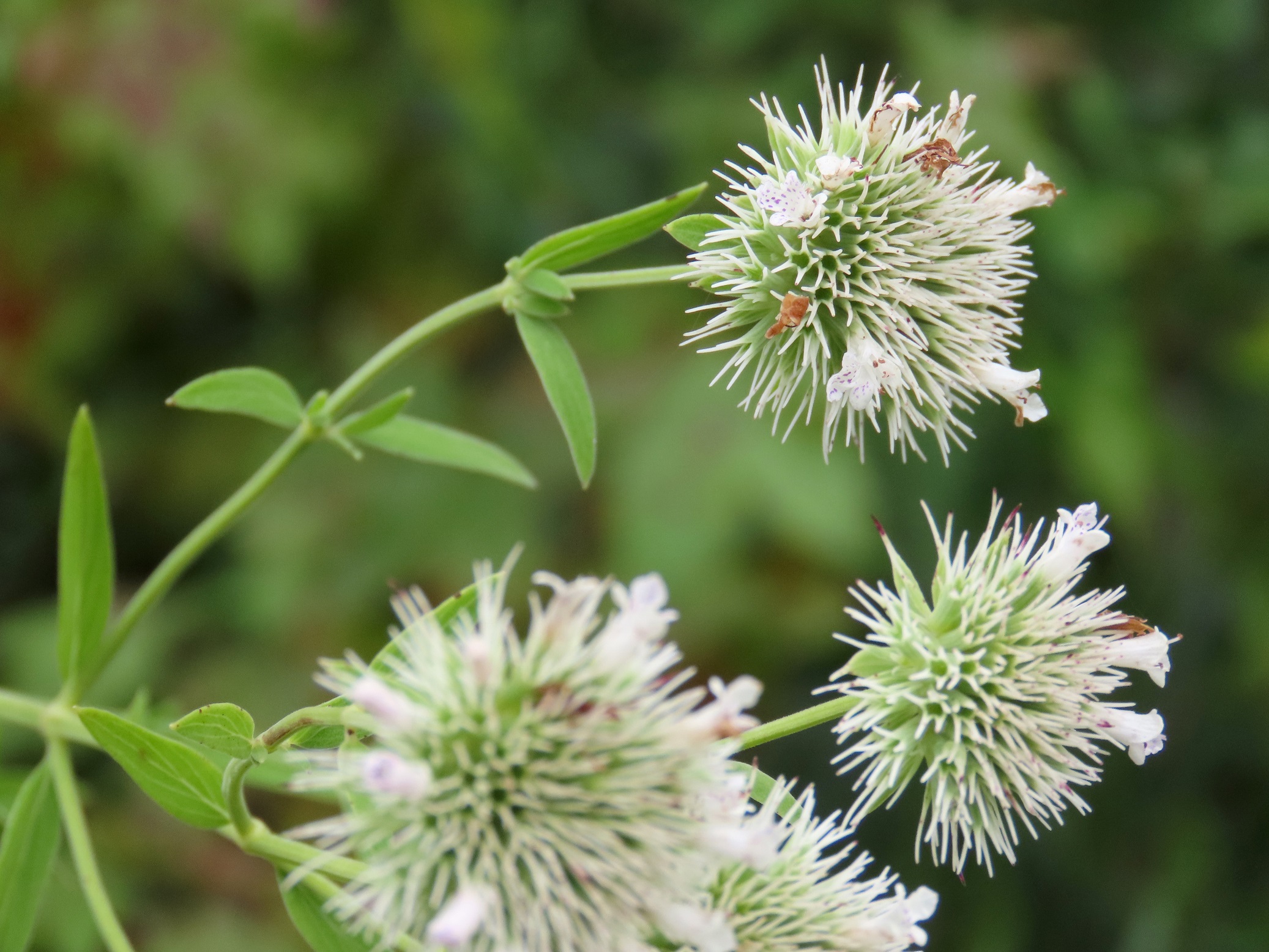
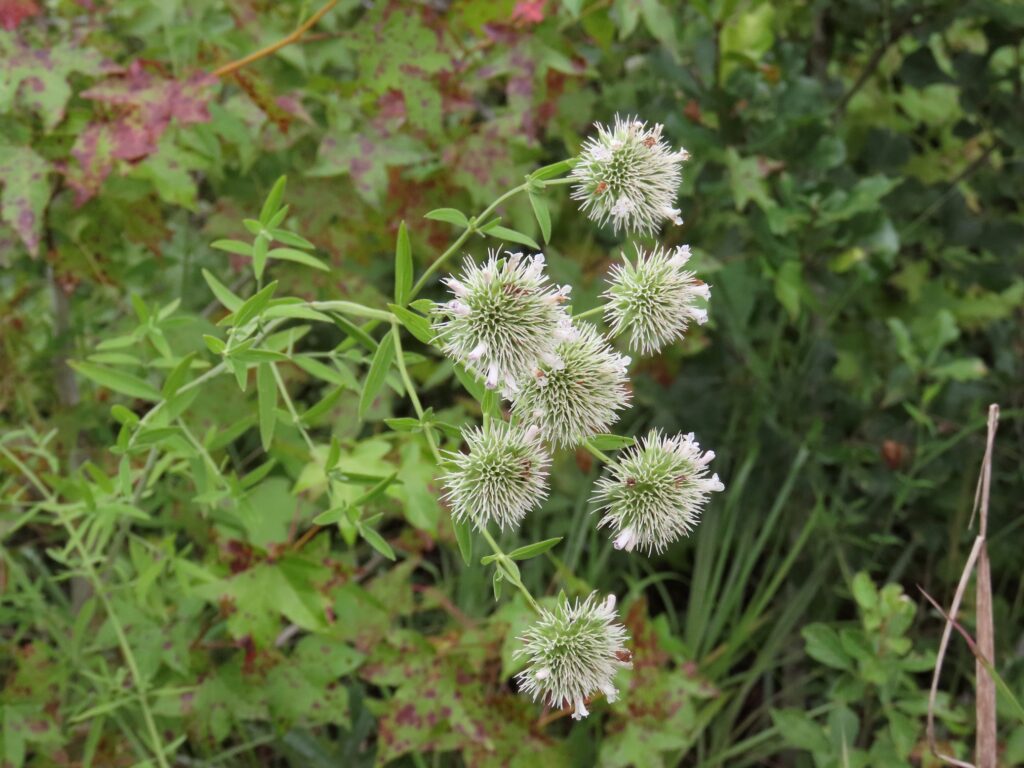
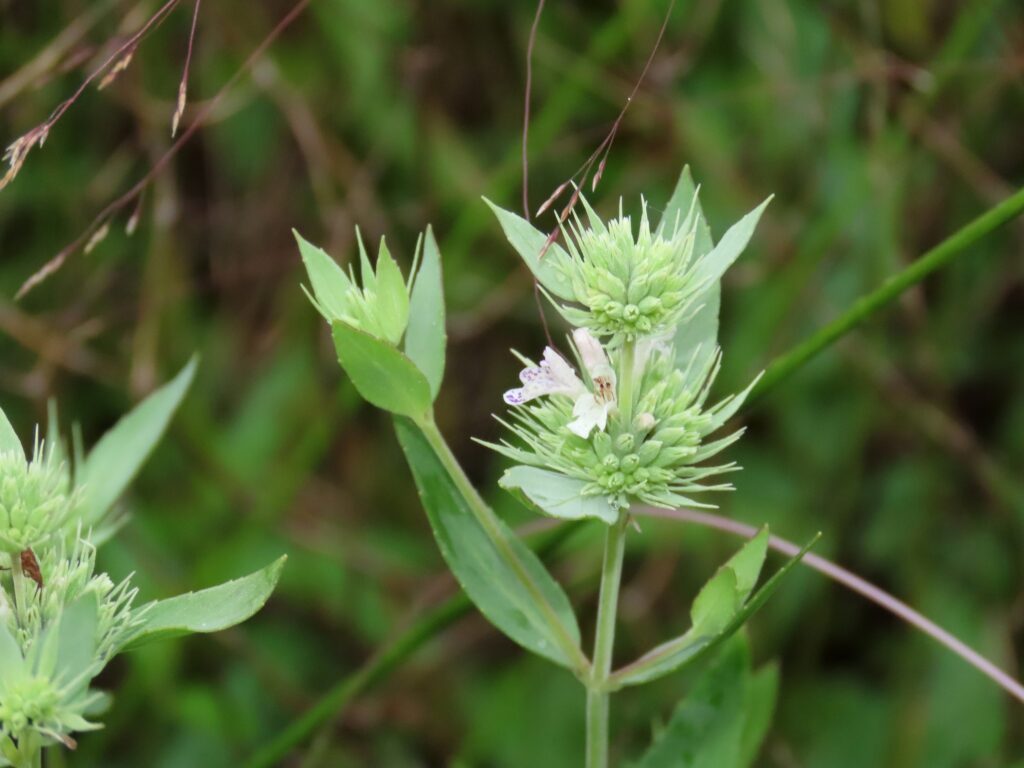
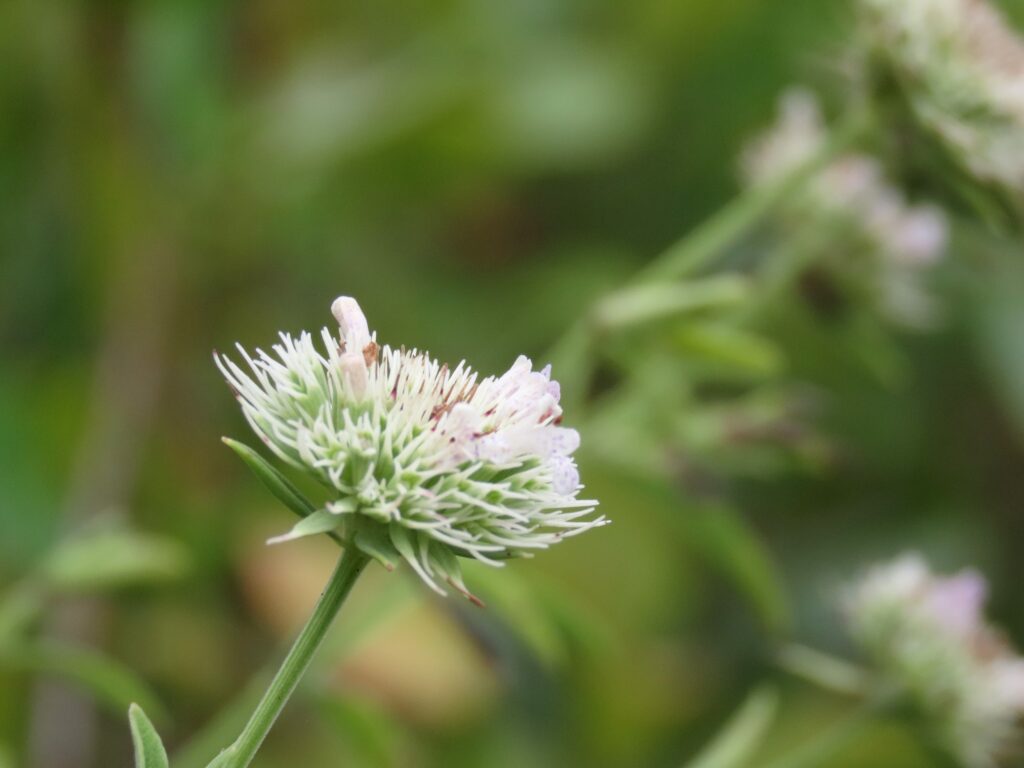
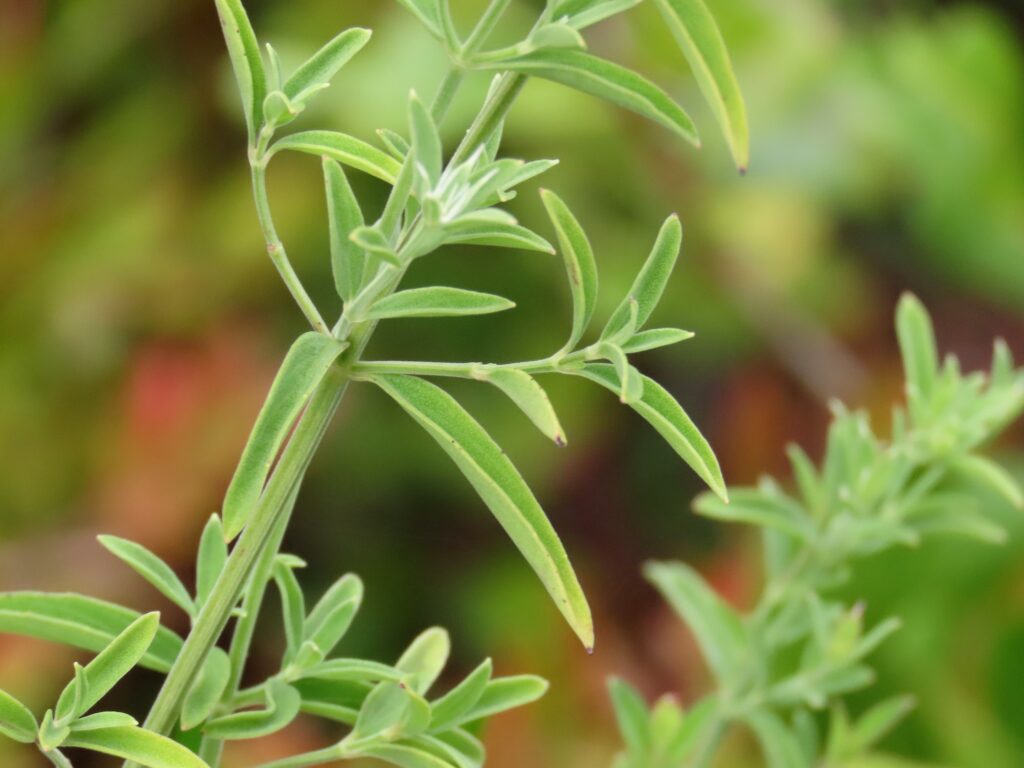
This week for Flora and Fauna Friday we have a wildflower that’s a feast for pollinators, Savanna Mountain-Mint (Pycnanthemum flexuosum).
Here in the South Carolina coastal plain, about seven species of Mountain-Mint can be found growing wild. Of those, Savanna Mountain-Mint is by far the most abundant here in the Lowcountry. Most all of our Mountain-Mints follow a similar physical pattern. Their growth is perennial, dying back to the roots in winter and spreading laterally underground all the while. They’re a large wildflower, growing waist to chest-high on oppositely arranged branching stems to create a small bush. Atop that bush will emerge small floral disks studded with white flowers and often perch above a ring of silver-washed leaves. Our subject today, Savanna Mountain-Mint, fits this generic mold well but with a few standout features to distinguish it from its relatives.
Savanna Mountain-Mint is on the smaller side for its genus, reaching up to about hip-high. Its leaves are thin and simple and shrouded in a faint silvery haze of fine hairs. Their stems share that same pale haze and they also bare the trademark square cross-section of the Mint Family, Lamiaceae. This species has a greater proclivity to spread through underground roots into a cluster than other Mountain-Mints, due to its preferred home in the fire prone Longleaf Pine savanna, a habitat where vegetation can be volatile but roots oft run deep. With the onset of summer, Savanna Mountain-Mint will begin to bloom, peaking in early July. The calyx of this species, the cup of leaves beneath each individual flower, produces five long, white points. This gives the flower clusters of Savanna Mountain-Mint an appearance like flattened pincushions. From this cluster emerges the actual flowers, about a quarter-inch wide and white with small magenta dots on their lower lip. Often times, only about a half-dozen flowers are present at a time on any lone cluster, with fresh flowers appearing every few days.
Like most mints, Mountain-Mint flowers are tubular in shape with a bilaterally symmetrical corolla of five petals. Two petals hang above the entrance to the tube and three fan out flat beneath it. This shape corrals pollinators, like a door with an awning and a porch, encouraging them to approach the flower from just one direction. This forces insects to contact an anther or stamen if they want a drink of sweet, sweet nectar, which in turn ups the odds that they’ll pollinate the flower. Savanna Mountain-Mint, and the genus in general, is an exceptional pollinator plant. They are enjoyed by pollinators of all shapes and sizes, from the minutest bee to the broadest of butterflies. Savanna Mountain-Mint is rather drought and heat tolerant for the genus and adapts well to many sandy soils, making it a good addition to native plant gardens here on the Sea Islands.